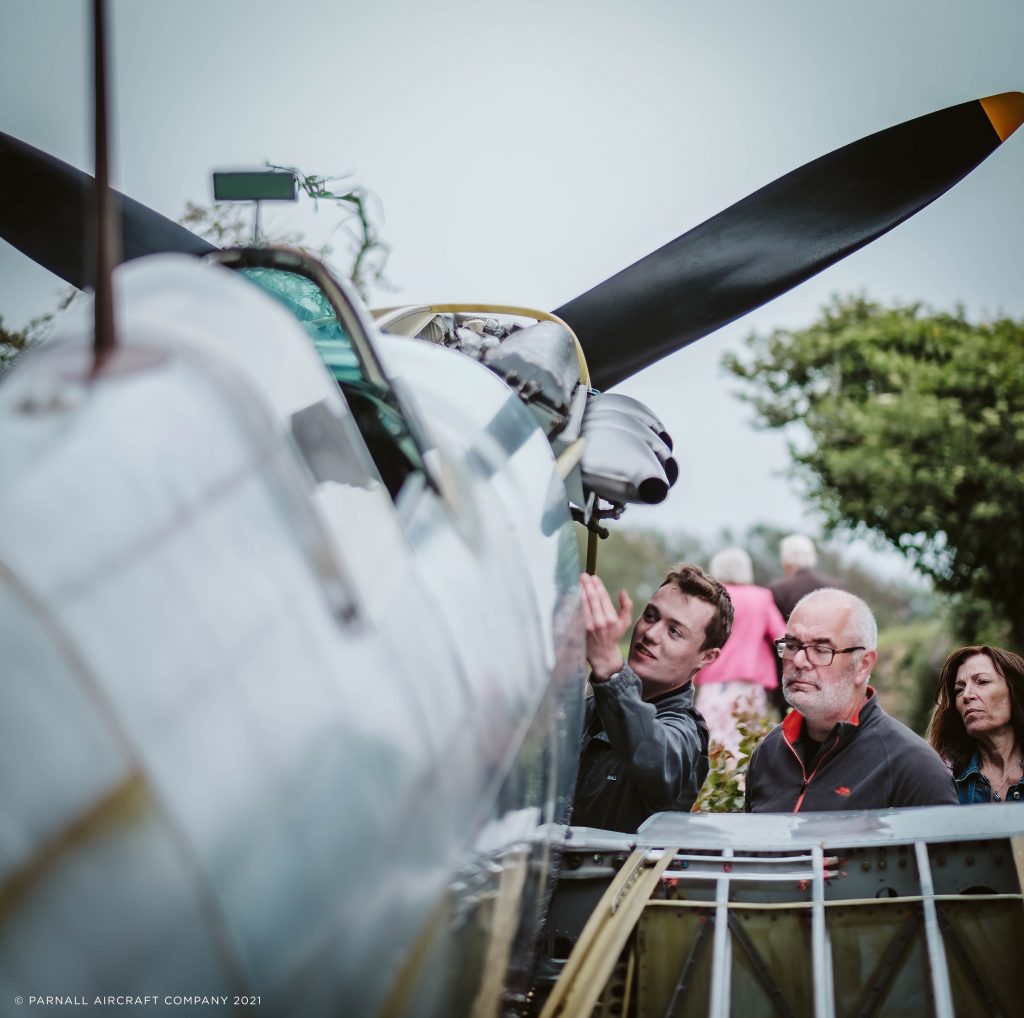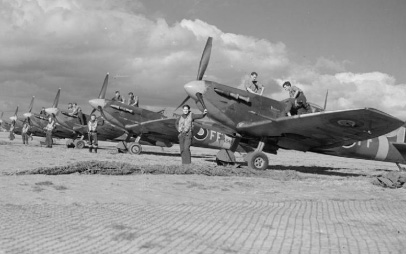The Parnall family can be traced back to St Austell, where the earliest ancestors (inevitably called “John” for reasons unknown) were employed as mine captains and engineers for the mining industry, as well as quarrying china clay. A couple of miles from Trelonk is a wood named after the family, known as “the Parnall Wood” and believed to be named after an employee in the Caerhays Estate. Within a few hundred yards is a house called “Parc Parnall” whose origins are unknown, but probably linked to the Parnall Canal and the Parnall Tunnel four miles away, now probably long since excavated into oblivion as the china clay pits extended. This canal is significant as thought to be the first ever built in Cornwall, constructed around 1720 by the family.
Trelonk itself is situated on an estuary from which china clay has long been extracted upstream. It is probable that the same china clay that was being washed out by Mark’s ancestors has ended up outside of Trelonk, and become part of the bricks that were fabricated at the estate’s now defunct brickworks, whose tower is found at the limit of the grounds. There is thus a powerful sense that family history is close by.
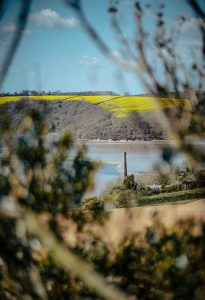
The family do not appear to have been very large, so far as we can research. Hester Parnall – it would appear the daughter of William Parnall, helped to set up and nurture the St Austell Brewery Company Limited. Of a small clan, Hester was a more well-known ancestor, and we are still trying to trace Mark’s lineage there. It is clear that the Parnall family were productive tradespeople, and they spread to the parish of St Gennys in North Cornwall through marriages. One particularly large roost was formed at Flanders Farm in St Gennys, and this site would gain importance as the spiritual home for this branch of the family.
In the 1830’s Brian and John Parnall of the St Austell families migrated to Bristol with their carpentry skills and set up a shop fitting business. This is a well-charted piece of industrial history, with Parnall & Sons becoming a very large firm, if not the largest shop fitting firm in the country by the 1920s. Its projects ranged from the front wrought-iron canopy of The Savoy to parts of Harrods, and later on in its life, rooms on the Queen Mary, the QE2 and the interior of the Concorde plane. It employed well over 10,000 people at its height, and merged with the weights-and-measures manufacturer Avery’s, and there was hardly a shop in England that did not have equipment, cheese cutters, meat cutters, cabinets and shelving in which Parnalls did not have a hand.
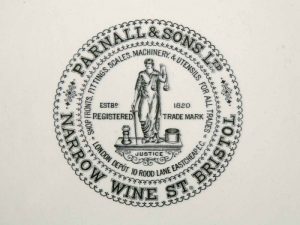
Mark however is particularly interested in the branch of family history in which the Parnalls first became involved in aviation, beginning with his own great-grandfather John Parnall. John had been born in Bristol and inherited the shop fitting enterprise from his father. Through associations with fellow Bristolians in the thick of the early 20th century when the golden age of aviation was beginning, it is clear he gained an interest in flying. It seemed an easy step for the carpentry divisions of the company to begin making aeroplanes during the struggle of the First World War, and the family archives contain large amounts of photographs showing the Parnall Factory at Fish Ponds and Yate, when it was subcontracted to De Havilland and other aircraft firms. Various airframes were made there – Shorts, Seaplanes, Avro 504, Hamble Baby, to name just a few. This enterprise began in 1916 and at its height during the First World War the factory churned out two machines per day.
However, demand for military aircraft naturally waned after the war, and the company’s dependence on uncertain manufacturing contracts led John’s son, George Parnall, at the time the managing director of the firm, to begin to think that Parnall should design its own planes. This culminated in George branching out from Parnall & Sons in 1919 and forming George Parnall & Company, moving both the aerodrome and factory operation to Yate in 1925. In 1935 this would become Parnall Aircraft Ltd and be divided into shares, taking on as a director Archibald Frazer-Nash, and subsuming his own firm Nash & Thompson.
George and John worked together in close harmony and a number of Parnall aircraft were designed and constructed. They include the Parnall Panther, Peto and the Cierva Autogiro – two of which were constructed under contract.
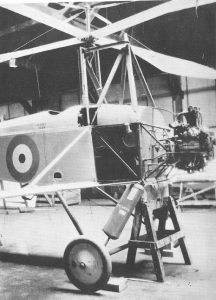
The family archives underline just how experimental it was to have such a significant interest in aircraft development. There were both survivors and failures. The Parnall Panther was really the only commercial aircraft put into mass production – about 300 were built, and of that 300 they were mostly used for testing on the country’s first aircraft carrier HMS Argus. This was a converted merchant ship that became a platform for seaplane experiments, and Parnall Panthers were used extensively during the trials. The journey of HMS Argus to the Mediterranean means that from Scotland (Leuchars) to Malta, the seas are littered with Panthers which failed to make the grade. There is even wreckage and a propeller in the Canary Islands.
The Parnall Peto was an aircraft with a great deal of history attached. Designed by Harold Bolas, it was much praised after its design had been finalised, but would suffer from the Royal Navy’s abandonment of submarine-launched aircraft after the M2 submarine disaster in January 1932, on which the plane’s second prototype was lost onboard. However, the Peto found its way to Japan where it was essentially copied to produce the Japanese submarine seaplane, the Yokusuka E6Y, used in the Sino-Japanese conflict. This Japanese version of the Peto went into large-scale production, and spawned a later model, the E14Y, which was flown by Nobuo Fujita when he firebombed a forest in Oregon in 1942, the only time during World War II that the US mainland was bombed by aircraft.
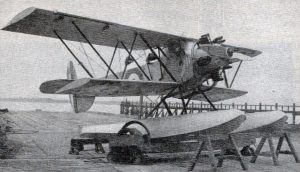
George’s passion for aircraft design buoyed these tireless experiments, and his hiring of Harold Bolas, who had previously been an assistant to future Spitfire designer R.J. Mitchell, propelled the Parnall Aircraft Company in ever more exciting directions.
The buildings at Trelonk are all named after aircraft from the Bolas era, many of which were named after Cornish seabirds and even mythical creatures – the Pipit, the Plover, the Imp, and the Elf were all produced in relatively small numbers by Parnall. A notable model was the giant Possum seaplane, which ended up as part of the anti-submarine patrol fleet in the Isles of Scilly.
By this time George’s father John had been widowed and he had remarried. John had a new son, Roger (Mark’s grandfather) and settled back into what he regarded as his native village of Crackington Haven (St Gennys), buying in the early 1920s a large estate on the coast stretching from Millook to Boscastle. There he built a large house for himself and seemed to settle into retirement but unfortunately met an early death in 1925.
At a very young age, Mark’s grandfather Roger and his half-brother George were left to fend for themselves. Roger was still catching the Bude to Bristol paddle up to Millfield School. George was running the business and George’s two sons, Alan and Denis, were also at school. It seemed that Roger did not really enjoy flying, but Alan and Denis seemed to live in aircraft from a very early age. They both went on to university – Alan at the University of London and Denis at Downing College, Cambridge. Alan studied architecture and Denis engineering.
They flew every moment that they could and by the 1930s had amassed huge numbers of hours, which their surviving logbooks attest to. From 1937 – 1940 Denis flew Vega Gulls, Percival Gulls, Miles Magisters, at times going back and forth from St Merryn and Okehampton in Cornwall, to Gatwick, taking his brother Alan and friends as passengers, but also high-ranking RAF members such as Air Chief Marshall Sir John Steel. The family archive contains so many pictures of both brothers flying different aircrafts to Cornwall, and it is necessary now to examine them more carefully. Denis’ log book also notes the day, September 3rd, when war broke out with Germany, at which point military aircraft became more often logged: Bristol Blenheims, Harvards, and even one marked as ‘new type’ – the Spitfire, which he flew consistently throughout May 1940 before being posted to 249 Squadron RAF.
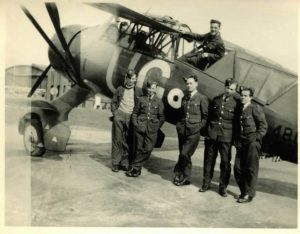
Alan Parnall was a Wing Commander and the older of the two brothers, he seemed to be a charmer and although it is difficult to tell it would appear that he and his brother toured Europe and enjoyed all the usual fruits of being young and well connected in the mid-1930s. The worst of the depression was over, and the Parnall Aircraft Company had merged with Frazer Nash to produce one large company. This allowed Alan and Denis to pursue all things to do with aircraft, studies and travel.
By this time George, their father, was working in association with another amazing aircraft designer of that era: Edgar Percival. A series of “Gulls” were designed by Percival and built under contract by Parnalls. Thereafter, they assumed the name of the ‘Percival Gull,’ but still bear the Parnall Maker’s Stamp. One is in Brussels Museum and another is alive and well in Australia. The Gull was one of the foremost explorer aircraft of its days, capable of safe, long distance travel. As such it was a staple of the 1930s’ golden age of transcontinental flying, and its various models were flown by record-breakers from Charles Kingsford Smith to Jean Batten. It also became the prototype for the later Vega Gull, used by Amy Johnson, Beryl Markham and Alex Henshaw.
When Alan and Denis were not flying, they spent every minute they could in Cornwall at their home in Crackington Haven. Landing planes on Penkenna Point being a seemingly habitual piece of derring do. They were both members of their University Air Squadrons and quickly gained experience, so as war loomed, they naturally joined the RAF. Mark’s grandfather, Roger, did also, but unfortunately failed his eyesight test and became an Air Traffic Controller. Little is known of his service record but Mark’s father John recalls how he was based in Malta during the terrible days of Malta’s siege as one of the Flight Controllers. The three Gloster Gladiators, ‘Faith’, ‘Hope’ and ‘Charity’, were probably aided by Roger on the ground.
Alan had a fearsome induction with Number 1 Army Co-operation Squadron (it would appear on secondment from the RAF) and hustled off across the Channel to take part in the battle for France. As the Luftwaffe, an air force twice the size of the Allied forces at the time, decimated the RAF Squadrons, the Lysanders of Army Co-op No.1 were similarly torn apart. They tried to fit bombing racks to the planes before being evacuated back to England to get ready for the Battle of Britain.
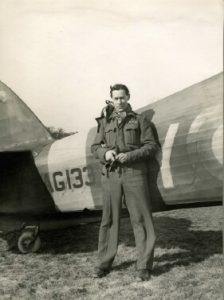
Alan survived, and for reasons unknown at some point came off flying duties and ended up as HQ staff, taking on a desk job. We have great photographs of him with Eisenhower and Montgomery and it is believed that he was in effect a Liaison Officer. In 1945 he was despatched, possibly under the auspices of the SOE to help Chiang Kai-shek advance the Republic of China Air Force. Again, there is a huge archive of cinefilm and photographs showing all his transit through Singapore, interacting with the Flying Tigers and training young Chinese pilots to fly. He came back in 1946 it would appear with a huge amount of Chinese furniture, gifts of porcelain etc, many of which are still with Mark.
Denis, poor chap, had a distinguished induction. He flew around the country during the early part of the war, mostly in one of Parnalls’ own Gulls but he also flew lots of aircraft seemingly at every minute he could. By the time the Battle of Britain started to emerge as an assault on Britain, Denis was in the thick of it flying with 249 Squadron, which would go on to become one of the top scoring fighter squadrons of the RAF during WWII. Flying alongside Wing Commander Hugh John Beazley DFC and ace Tom Neil DFC & Bar, AFC, AE, he quickly gained skills and shot down, either alone or shared, a Junkers Ju 88, several Messerschmitt 110s and several Heinkel He 111s. This was to be a brief and intense periods of Denis’ life, which came to an end on the 18th day of September 1940 right at the tail end of the Battle of Britain. He lost his life due to his Hurricane being shot down during a patrol over Essex by pilot Gerhard Grzymalla, who himself was shot down on the 23rd September, 5 days later. Denis’ body was never recovered but his aircraft, Hurricane V6685, was excavated in 1979, and parts of it are now on display in the Essex Historic Aircraft Collection.
Such a loss to the family was intensely felt. It probably changed Alan’s life forever and may well account for the fact that it may have brought to an end his flying. War has many victims and Alan when he returned in 1946 never fully recovered his health and he died in 1967.
Roger returned and continued with his Law studies which had been interrupted by the War. He joined the family firm in Launceston as a Solicitor and Partner and practised there for well on 40 years until his death in 1981.
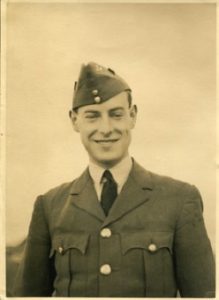
As often in many families, the lure of history skipped a generation but fell on Mark to collect wherever he could lots of letters, albums, archives and cinefilm. Rather than throwing these artefacts away, other members of the family gave them to him. Mark has therefore amassed as a hub all the archives from all different branches of the family, including those in Northumberland, which spawned Rear Admiral Engineer Randolph Parnall, who was one of the right-hand men of King George VI.
Having a passion for this kind of history and possessing the relevant documents, Mark has given birth to a project at Trelonk. A friend happened to know someone who had a Spitfire for sale in pieces, and our first aircraft was acquired – Spitfire Mk.V BL688. The Hangar was equipped and shortly thereafter the restoration of BL688 began. The airframe of another Spitfire was carried out alongside BL688. This is in effect a brand new Spitfire, a reproduction of the Presentation Spitfire of St Ives marked as BL709.
It is hoped to start shortly a more formal ‘Parnall’ museum, through cataloguing the archive and bringing to life through displays all the amazing history of this Cornish family. Founding members of the Cornish Society in Bristol, they proved that you could take the man out of Cornwall, but not the Cornwall out of the man, and all were buried in St Gennys Church, North Cornwall. Trying to condense a hundred years of history into a short précis is a difficult job indeed, but whether it was making gun turrets for the heavy bomber fleet under the trademark FN, constructing parts for Mosquitos, Horsa Gliders, Tiger Moths and eventually interior items for the prototype Concorde, the Parnall family has operated at the innovative heart of the world of aviation.
